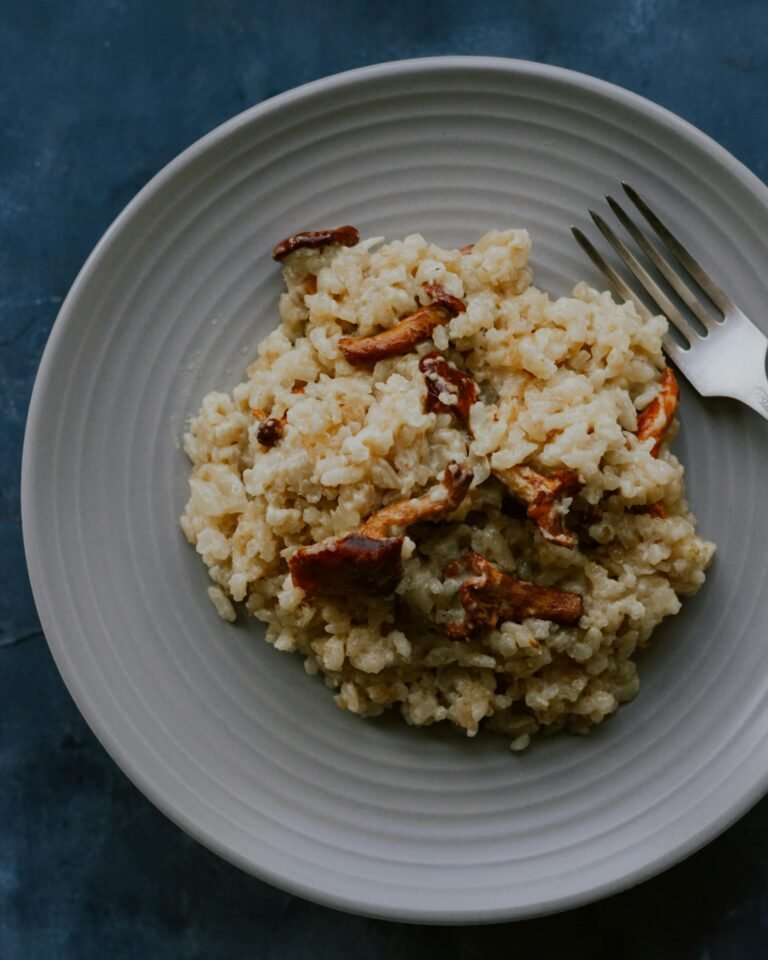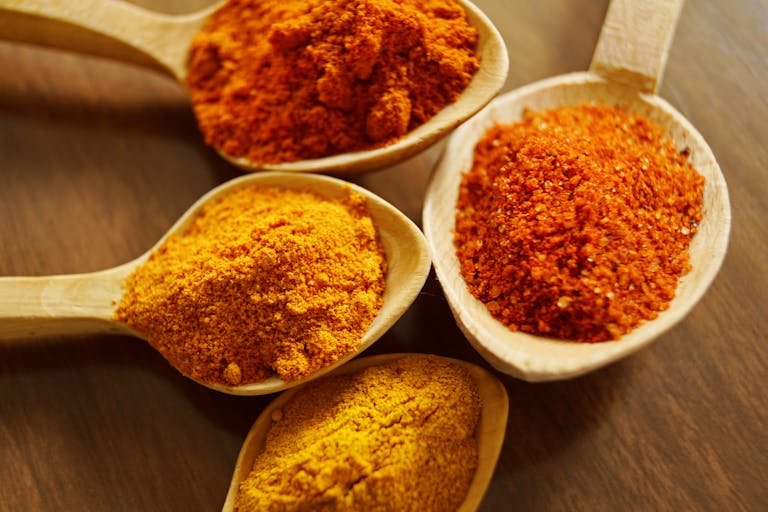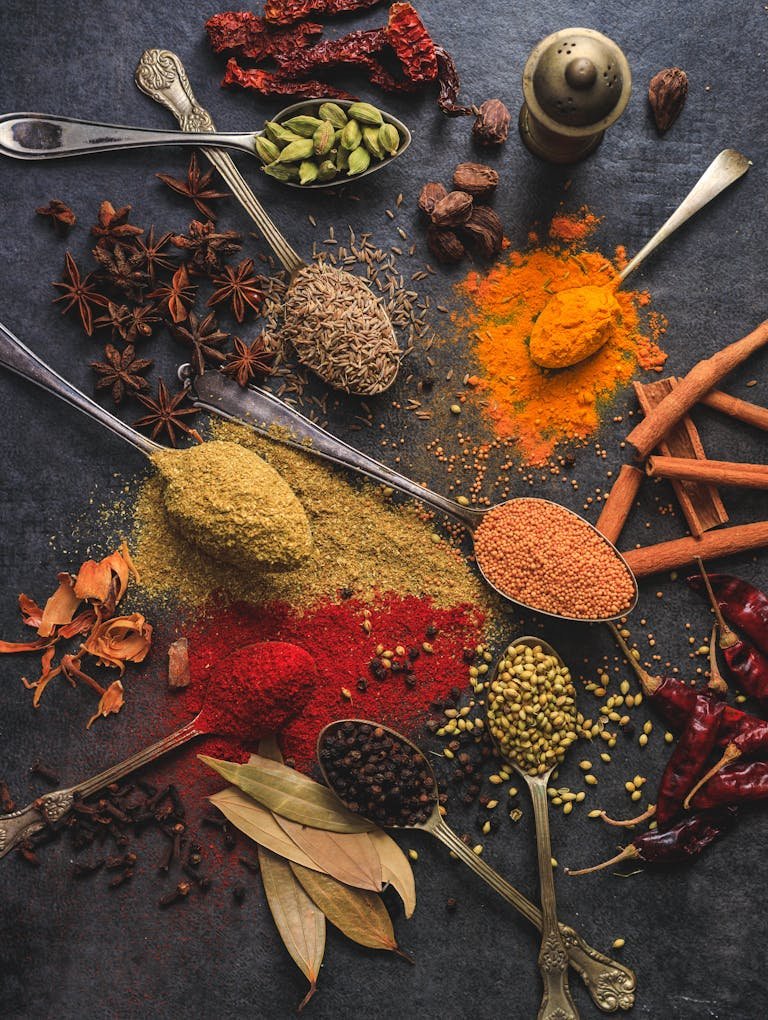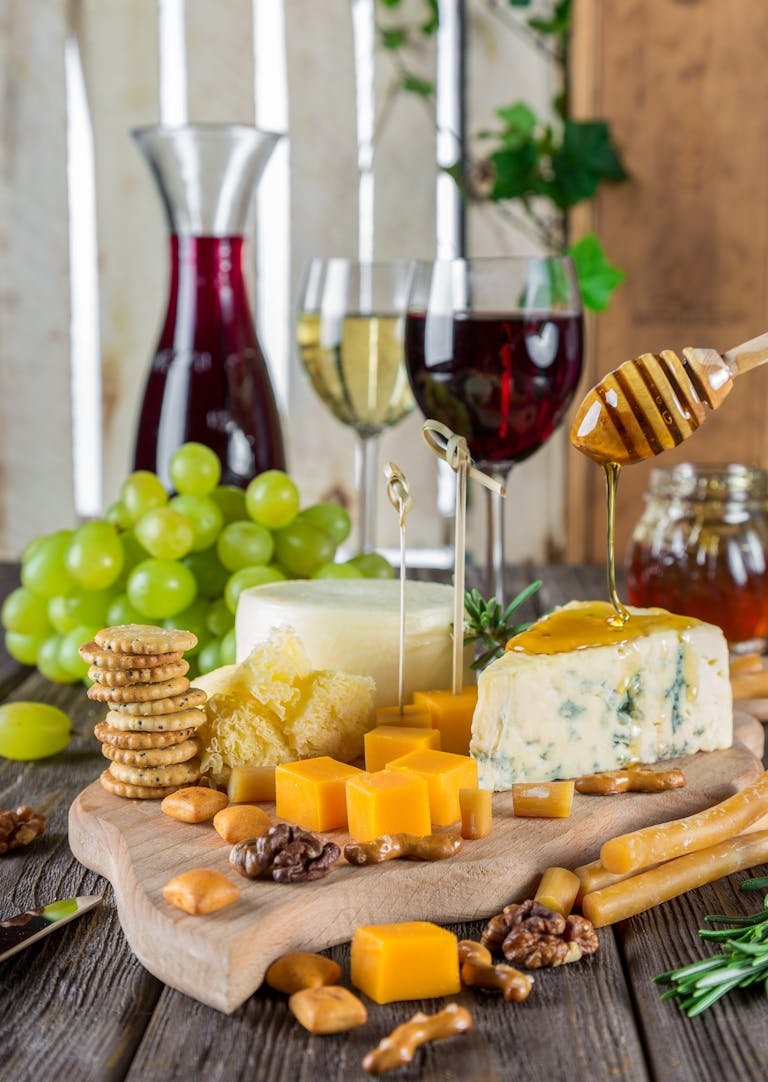Best 10 Essential Thai Ingredients Every Home Cook Needs
Discover 10 essential Thai ingredients every home cook needs to create authentic Thai flavors. From fish sauce to lemongrass, learn how to stock your pantry.
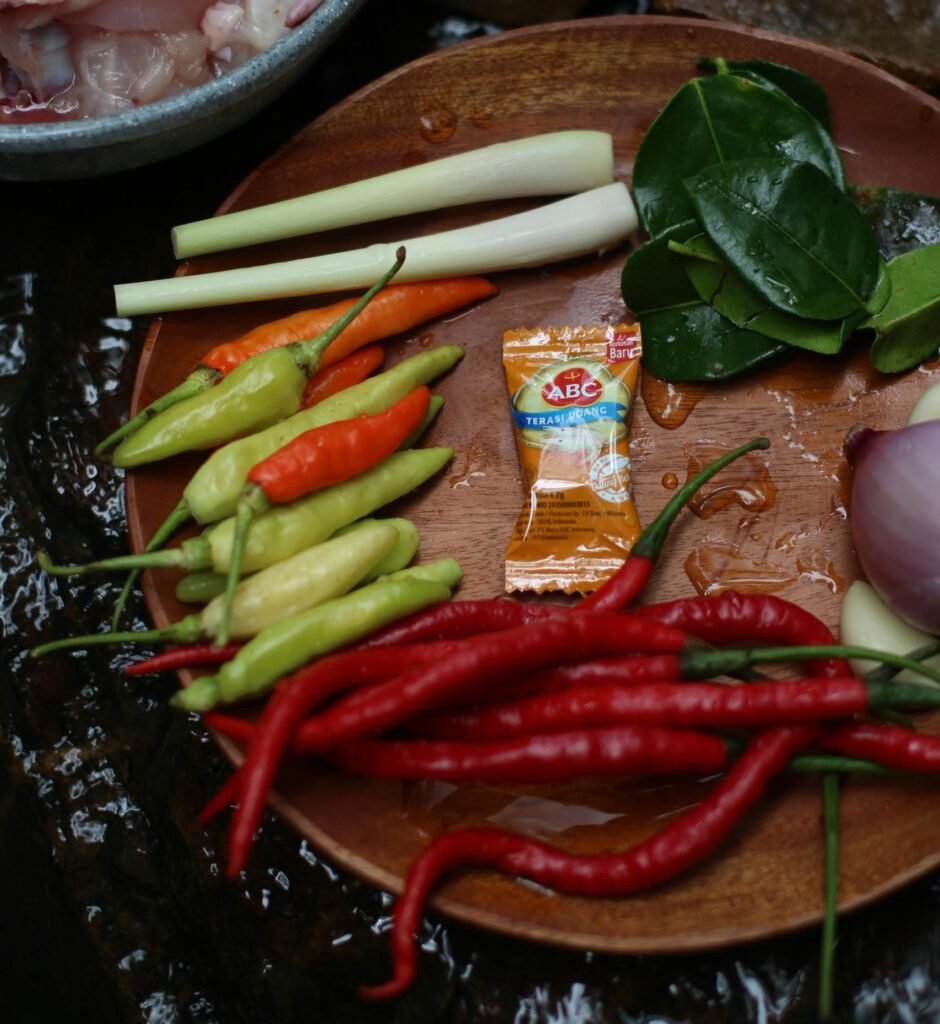
Ever found yourself in the Asian grocery aisle feeling completely lost? You’re definitely not alone! When I first ventured into cooking Thai food, I remember staring at shelves filled with unfamiliar bottles and packages, wondering what I needed to recreate my favorite Pad Thai like the ones from local restaurants. After years of experimenting, I’ve pinpointed the essential Thai ingredients that will elevate your Thai cooking.
Thai Ingredients #1. Fish Sauce (Nam Pla)
Honestly, the first time I opened a bottle of fish sauce, I almost gave up on Thai cooking for good! But this unique, salty liquid is truly the heart of Thai cuisine. It’s like the secret key that unlocks authentic Thai flavours.
Fish sauce is what gives Thai dishes that rich, savory umami kick that makes you go “wow” with every bite.
The great thing about fish sauce is how it changes when you cook with it. That strong fishy aroma? It completely mellows out, leaving behind a wonderful depth of flavour that plain salt just can’t match. I usually start with a teaspoon and adjust from there—believe me, using too much fish sauce can quickly turn your meal into a salt overload.
My favorite brands are Red Boat or Three Crabs, but honestly, any good fish sauce will work when you’re just starting out. Just make sure it lists fish and salt as the main ingredients. And here’s a tip I wish I had known earlier: keep it in the fridge after opening. It will last much longer and won’t smell as strong!
Thai Ingredients #2. Coconut Milk
Coconut milk was definitely my introduction to Thai cooking! It’s like the heart of Thai cuisine, bringing a delightful tropical flavour that makes every dish feel like a mini-vacation.
What really frustrates me, though, are those recipes that simply say “1 can coconut milk” without clarifying whether it should be full-fat or light. Although, I figured out that full-fat coconut milk is crucial for achieving that rich, creamy texture we all crave in Thai dishes. I once tried to be “healthy” and used light coconut milk in a green curry—it was as satisfying as a rainy day at the beach.
Here’s a neat tip I picked up: when making a curry, you want to use the thick cream that rises to the top of the can. That’s what you sauté your curry paste in to create that beautiful red oil that makes restaurant curries so appealing. Now, I store my cans upside down so the cream is at the bottom when I open them—much less messy!
And please, whatever you do, don’t shake the can before opening if you’re preparing a curry. Save that for soups and other dishes where you want a thinner consistency. I learned this trick in a Thai cooking class, and it really improved my curry-making skills!
Thai Ingredients #3. Palm Sugar
Palm sugar is something I wish I had known about earlier: it is NOT the same as brown sugar! I spent way too long believing I could swap one for the other. Just a heads up: the caramel notes in palm sugar are entirely different!
Palm sugar usually comes in hard discs or paste form, and I used to get really frustrated trying to measure it out. Now, I simply grate it with a microplane grater! It has a subtle caramel flavour that’s not as overpoweringly sweet as regular sugar, with delightful toffee notes that enhance spicy and sour dishes.
The first time I used real palm sugar in a Pad Thai, it felt like someone had turned on the flavour HD switch. All those intricate sweet-sour-savory notes suddenly clicked! Sure, it’s a bit pricier than regular sugar, but believe me, it’s worth every cent if you want that genuine Thai flavour.
Thai Ingredients #4. Thai Bird’s Eye Chilies
Fair warning: these tiny little demons pack a serious punch! The first time I cooked with them, I thought, “How hot could these cute little peppers be?” So, I chopped up three for a single serving of papaya salad. Big mistake. HUGE mistake. I couldn’t feel my tongue for an hour!
Now, I have a healthy respect for these fiery little guys. They’re essential for that authentic Thai heat that builds slowly but doesn’t overwhelm the other flavours. I’ve learned to start with just one, finely chopped, and work my way up. And for heaven’s sake, wear gloves when you’re chopping them!
What I love about Thai bird’s eye chillies is how they bring this clean, sharp heat that’s different from other chillies. They don’t just make your food spicy; they add this bright, almost citrusy note that really wakes up your taste buds.
Pro tip: freeze them! They last forever this way, and you can just grab what you need when you’re cooking.
Thai Ingredients #5. Thai Basil
I thought regular basil would be just as good as Thai basil? Oh man, was I mistaken! Thai basil has this incredible anise-like flavour that regular sweet basil simply can’t replicate. It’s like the difference between pretending to play guitar and actually rocking out on a real one.
I even started growing my own Thai basil after getting tired of how fast it wilts in the fridge. It’s surprisingly easy to cultivate, even if you’re like me and tend to unintentionally kill most plants. The leaves are smaller and more pointed than those of regular basil, with beautiful purple stems that make them stand out.
Here’s a tip I picked up: if you can’t find Thai basil (which can be tough in some places), regular basil isn’t the best alternative—believe it or not, mint actually works better in many recipes! But honestly, once you’ve tasted pad kra pao made with authentic Thai basil, nothing else really compares.
Thai Ingredients #6. Lemongrass
The first time I bought lemongrass, I chopped it up and tossed it into my curry. Yeah… don’t make that mistake unless you want to spend time picking woody fibers out of your teeth! Using lemongrass is all about technique.
This aromatic ingredient is what gives Thai cuisine its unique citrusy-floral flavour that you just can’t replicate with anything else. I’ve tried substituting lemon zest (spoiler: it doesn’t work), and trust me, there’s no shortcut here. The good news is that lemongrass is pretty easy to find these days, even in regular grocery stores.
The key to using lemongrass is in the preparation. You need to peel off the tough outer layers, use only the bottom third of the stalk, and either pound it to release the oils or slice it very thin if you’re adding it to the dish. I actually save those tough outer layers and toss them into my homemade stock—it adds incredible flavour!
Thai Ingredients #7. Kaffir Lime Leaves
These little leaves are truly brilliant in Thai cooking! They bring an incredibly unique citrusy-floral aroma that’s hard to describe until you experience it for yourself. The first time I used them, it felt like someone had cranked up the flavour of my curry.
I once tried to swap in regular lime zest (we’ve all been there, right?). Let’s just say it didn’t turn out well. Kaffir lime leaves have a distinct perfume that’s almost medicinal—in a good way! They serve as the bass note in a perfect Thai curry, adding depth and complexity that you just can’t replicate.
Pro tip: they freeze really well! I always grab extra when I see them and toss them in the freezer. They maintain their flavour for months, and you can crumble them directly from frozen into your dishes. Just don’t forget to take them out before serving—they’re more for flavoring than for eating.
Thai Ingredients #8. Galangal
Let’s set the record straight – galangal is NOT the same as ginger!
Galangal has a distinct piney, citrusy flavour that’s sharper and more peppery than ginger. It’s as if ginger went to a fancy school and returned with a degree in complexity! The first time I used real galangal in my Tom Kha, it felt like I had just switched from black and white to color TV.
Here’s a tip: if you can only find frozen galangal, don’t worry – it works nearly as well as fresh. Just slice it very thin before it completely thaws. And whatever you do, don’t try to grate it like ginger – you’ll end up with a messy situation and possibly a scraped knuckle.
Thai Ingredients #9. Shrimp Paste (Kapi)
Now, let’s discuss shrimp paste – and I’m warning you, this stuff is STRONG! The first time I opened a jar, my cat literally bolted from the room. But don’t let that deter you, because this funky fermented paste is essential for certain Thai dishes.
I remember making my first authentic green curry paste from scratch. When I added the shrimp paste, the smell nearly knocked me off my feet, but the final curry? Absolutely magical! It brings a deep, savoury flavour that you just can’t replicate. Think of it as the secret umami weapon in Thai cooking.
Pro tip: store it in TWO sealed containers and maybe keep it in an outside fridge if you have one. Your family will appreciate it. And start with tiny amounts – like, really tiny. A little goes a long way, and you can always add more, but you can’t take it out once it’s in there!
Thai Ingredients #10. Thai White Pepper
White pepper may seem like an unusual essential thai ingredients to list, but believe me on this one! It offers a different kind of heat compared to black pepper – more floral and earthy. I realised this when I made Tom Yum soup using black pepper instead of white, and something just felt… off.
In Thai cuisine, white pepper provides a subtle warmth that gradually builds in the background. It’s not about the spiciness – that’s what the chillies are for! Instead, it contributes a lovely depth that harmonises all the other flavours. Plus, it helps keep your light-coloured soups and sauces looking clean and appealing.
One of my favourite tips is to have a dedicated pepper grinder just for white peppercorns.
Thai Cooking is Now Easier!
We’ve covered a lot of ground here, from the funky (hello, fish sauce!) to the fiery (those sneaky bird’s eye chillies!). Building your Thai pantry might seem overwhelming at first, but once you have these 10 essential Thai ingredients, you’ll be creating authentic Thai dishes that will make your local takeout place envious.
Remember, everyone’s Thai cooking journey is unique. Start with what feels comfortable, perhaps fish sauce and coconut milk, and then gradually explore the more exotic ingredients. And don’t stress if you make a few mistakes along the way—that’s part of the fun of learning!
I’d love to hear about your experiences with these essential Thai ingredients! What surprised you the most? Any cooking disasters that turned into triumphs? Share your stories in the comments below—we’re all in this delicious journey together!



